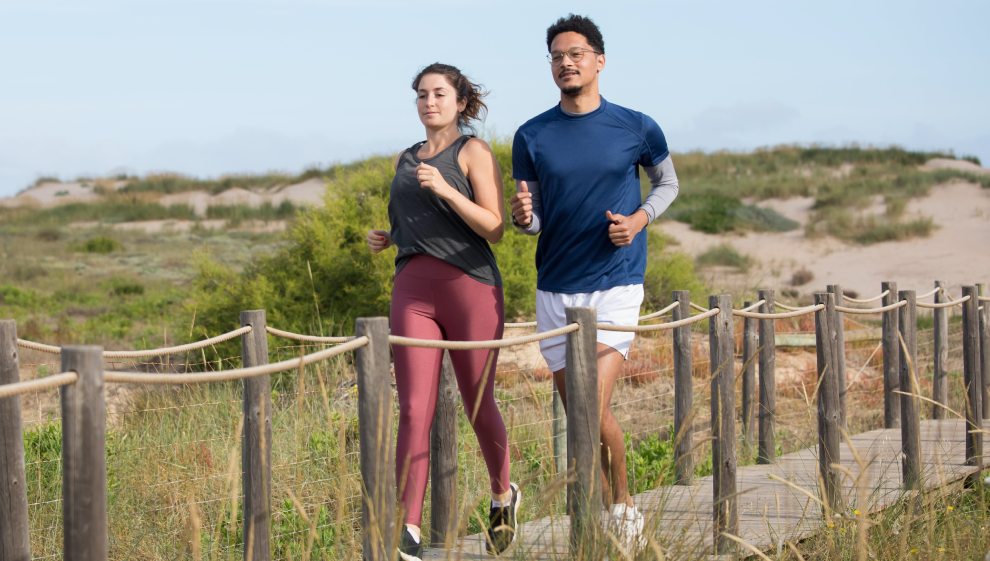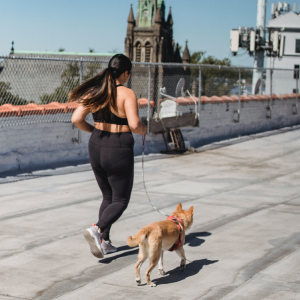How to get started with Couch to 5k
- Overview
Key information
- Couch to 5k is the perfect way to start running
- Recommended by the NHS, C25k is designed for people who have never run before
- The C25K programme has helped millions of people get into running
- You can balance walking, jogging, and running
- Every plan contains rest days to allow your body time off
- Never run through an injury and make sure you’re getting enough rest
- Mix up your routes to avoid boredom and mental fatigue
What is couch to 5k?

Couch to 5k is a running programme designed for absolute beginners looking to build up to running a 5km race at the end of the programme.
To start, C25K mixes walking, running, and jogging to get you going. As you progress through the programme and your fitness improves, you’ll start running more and walking less.
By the end of the programme, you should be able to run 5km at a pace that feels comfortable for you.
How does couch to 5k work?
Couch to 5k works by slowly building up your ability and confidence over time. Instead of throwing you in at the deep end, you're encouraged to get comfortable with a blend of walking and running as your body gets used to a new level of activity.
Unlike other programmes, couch to 5k is all about accessibility and working for everyone. It's a great way of getting into running because it helps you improve at a steady pace.
What can couch to 5k help with?
- Building confidence
- Weight loss
- Joint health
- Mental health
- Maintaining a healthy exercise routine
- Improved sleep
- Stress reduction
- Building muscle
How long does the programme last?
There are different versions of the C25K programme that take different lengths of time to complete.
If you’re returning to running, you might prefer a 6-week variation that introduces running quickly. If you’re an absolute beginner, the NHS 9-week C25K programme is a good place to start.
How long does each session last?
This all depends on the speed you run, jog, or walk.
Each session is designed with a time in mind, not a distance. That means you can complete every session at a pace that works for you.
If you’re coming back to running after some time off, you may find the first few weeks aren’t too challenging. If this sounds familiar, try jumping forward a week and seeing if this feels more suitable for you.
Can I do C25K if I’ve never ran before?
Absolutely. This is exactly who the programme is designed for.
The programme starts off with a blend of jogging and walking that’s instantly accessible for people who’ve never ran before.
Don’t worry about speed, tempo, pace, or what you look like when you run. You can take things at your pace and find a speed that’s comfortable for you.
Remember that every run is progress and that a training plan is designed to build your ability over time.
How does the programme work?

Whilst the length of each couch to 5k programme varies slightly, the basic idea is the same.
You begin at week 1 and complete a series of runs before progressing on to week 2. Each run will have a time element attached to it.
For example, Week 1 Day 1 might look like “a brisk 5-minute walk followed by 30 seconds of running alternated with 60 seconds of walking”.
As you keep moving through the weeks, the intensity and length of each run will increase. You’ll also find that the amount of walking decreases as you’re tasked with running a bit more each week.
What if I miss a run?
If you miss a run, don’t worry.
You can swap a running day with a rest day, even if this means you are running back to back days.
I’m struggling to complete a workout
If you’re struggling to complete any of the weekly workouts, we recommend repeating the week you’re on before progressing.
This will give your body the chance to get used to a speed, time, or distance that you’re finding tricky before moving on.
I’m in pain when I run
Feeling aches and pains when you first start running is normal. Your body won’t be used to the movements involved and you might find your knees need some time to get used to running.
You might also find your muscles ache after a run. This is also normal and a sign that you’ve worked the areas that are feeling tight and sore.
It’s important you prioritise rest and recovery alongside your running. This is where your body builds and repairs muscle and without it, you won’t be able to keep up with the programme.
When to take a break
Whilst we all experience some discomfort when running, it’s important to know when to stop. Running through an injury can have serious repercussions and may mean taking a long time out from running.
If you feel any joint pain, or you have a health condition that is worsening when you run, stop immediately and consult a professional before continuing.
Getting started with Couch to 5k
Couch to 5k has become a bit of a global phenomenon.
The programme has been adopted by various smartphone apps, books, and training programmes, all of which tweak the core structure slightly. The basics however, remain the same.
Weeks 1 to 3
Alternating between walking and jogging at intervals. For example, you might start with 60 seconds of jogging followed by 90 seconds of walking, repeated for about 20-30 minutes.
Weeks 4 to 6
Gradually increasing the duration of jogging intervals and decreasing walking intervals. This phase continues to build your stamina.
Weeks 7 to 9
Focusing on longer continuous runs to help you reach the goal of running a 5K without walking breaks.
You can find Couch to 5k plans online, in books, or even create your own based on the core ideas mentioned above.
If you prefer a more structured approach and enjoy the convenience of a guided program, many apps are available for Android and iOS. The most popular choice is the "C25K" app by Zen Labs, which provides audio cues and tracking features to guide you through each workout.
Our top couch to 5k tips
- Never skip the warm up: warming up and cooling down are vital for avoiding injury
- Pace yourself: always run at a pace that is comfortable for you
- Never ignore an injury: if something doesn’t feel right, get yourself checked out
- Mix up your routes: running the same route every run will quickly get boring
- Stick to the plan: if you’re new to running, following a plan helps avoid injury
- Don’t overinvest: the best thing about running is you don’t need a lot of expensive gear
- Start small, dream big: think of C25K as a stepping stone towards bigger running goals
- Focus on completing the distance: speed, weight loss, and PBs will all come naturally
- Celebrate your achievements: each run is a progression, so take stock and celebrate!
Do I need any special equipment?
Absolutely not. The best thing about running is that all you need is a comfortable pair of running shoes to get you going.
We’d discourage you from spending loads on fancy tech when you’re starting out. Non-essential items like smartwatches, heart rate monitors, and expensive kits can be picked up further down the line when you’re sure running is right for you.
- If you are interested in running gear, click here for our list of essentials
Are other exercises included?

No, couch to 5k is a running programme that doesn’t include any other forms of exercise.
That doesn’t mean you can’t perform strength and conditioning exercises alongside your running. Most intermediate and advanced running plans will feature some form of strength training as this form of training is valuable when it comes to building speed and stamina.
If you’re an absolute beginner, it’s best to concentrate on running for now. You can introduce other forms of training further down the line, including cycling, yoga, Pilates, and strength and conditioning.
What’s next after couch to 5k?
First off, congratulations on completing the couch to 5k programme.
If you’re looking for a new challenge after completing C25K, there’s plenty for you to set your sights on. You may fancy trimming some time off your new 5km time, or upping the distance and aiming for a 10km.
Whatever you have in mind, we have a plan that can help. Click any of the links below to discover a new goal that works for you.
Last updated Thursday 18 July 2024
First published on Thursday 4 January 2024
